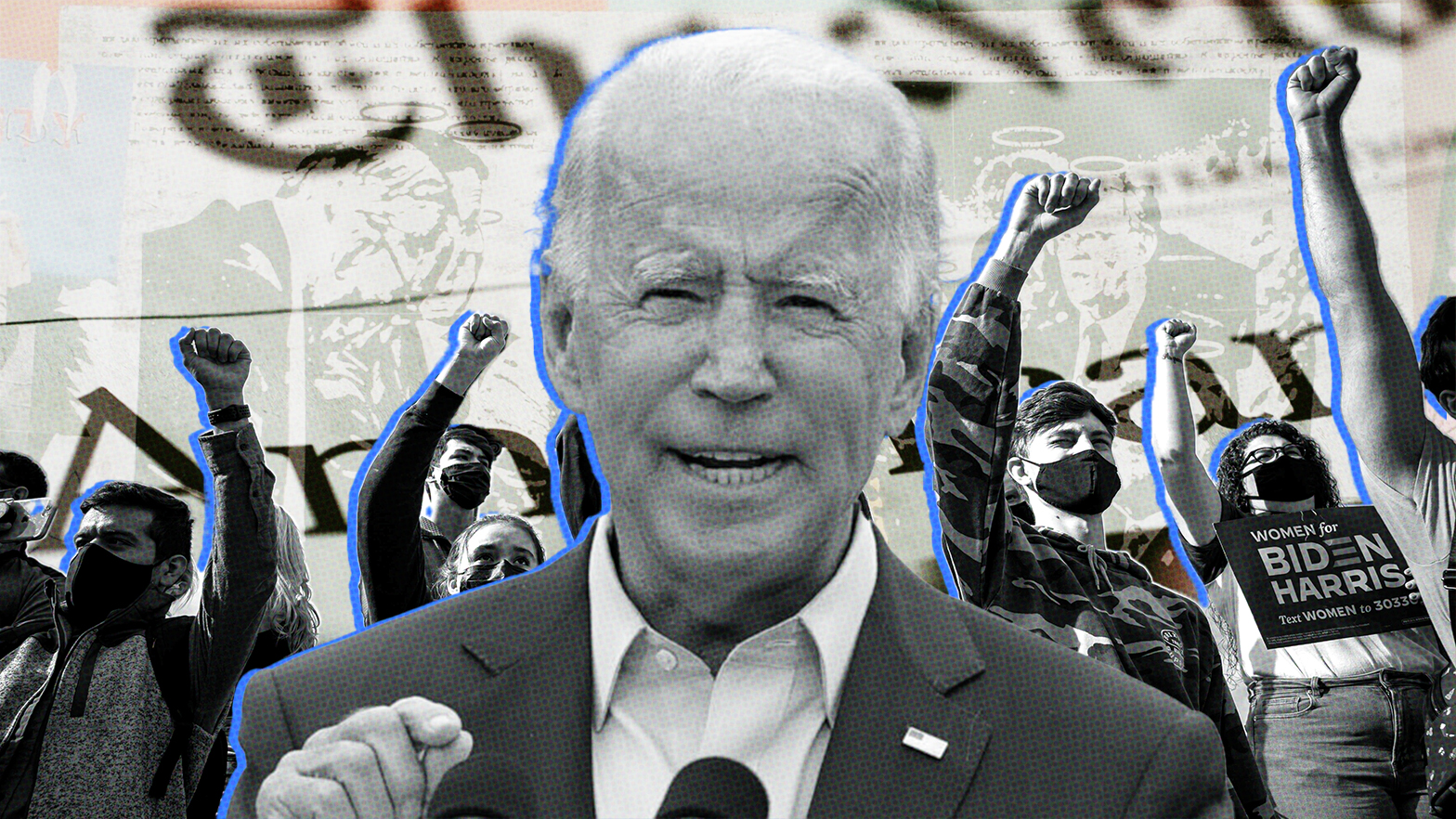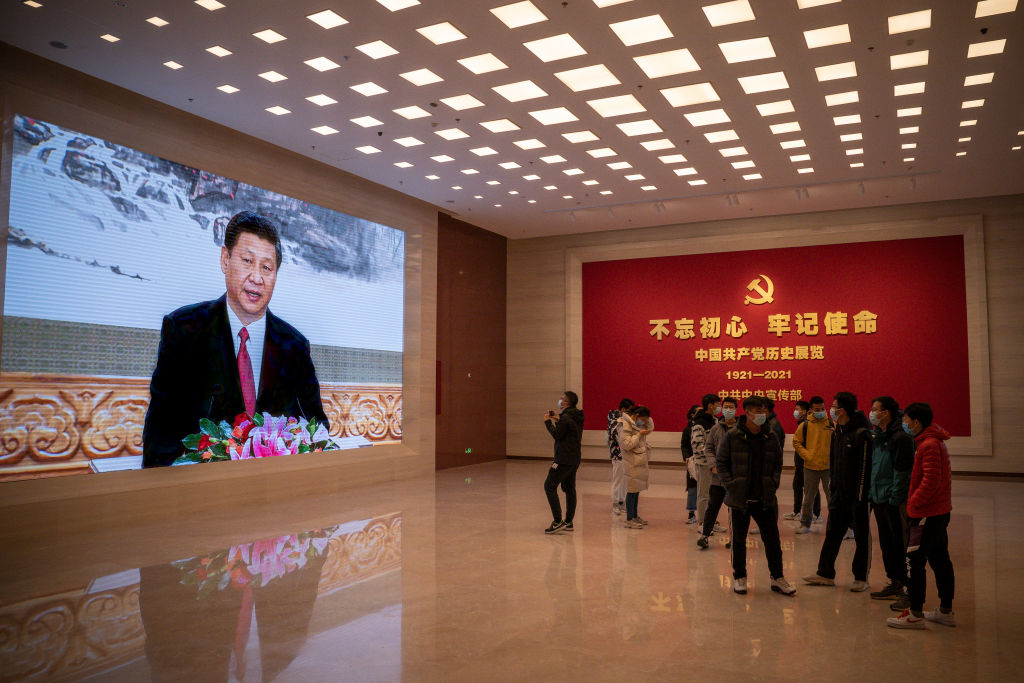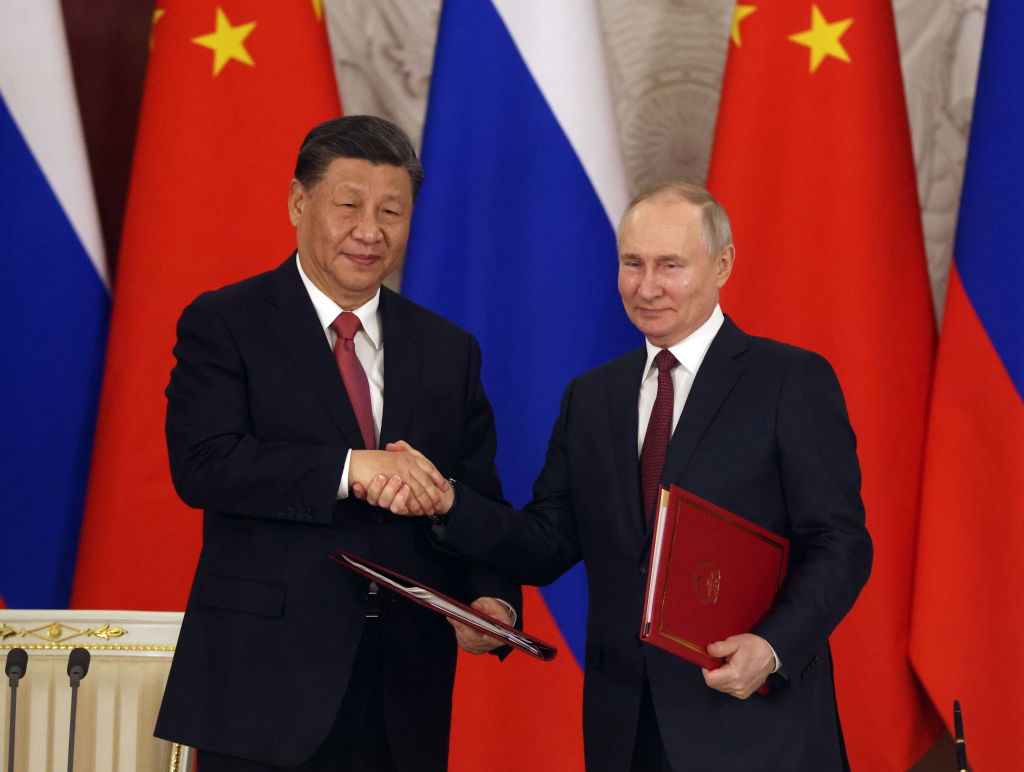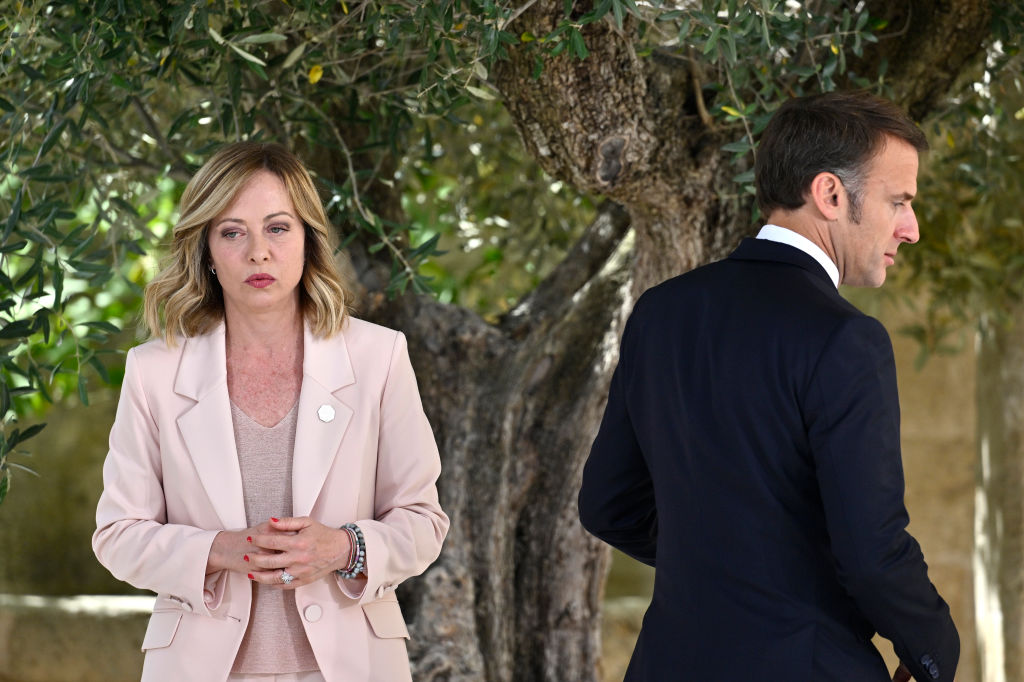What Is Total Boomer Luxury Communism?

The invisible driver of America’s decline.
For half a decade, the Right has debated “free market fundamentalism.” This phenomenon is also known as “zombie Reaganism,” “libertarian neoconservatism,” and “neoliberalism.” Whatever you call it, it never happened. That is to say, the reduction in government expenditure and size that Reaganites promised and liberals feared turned out to be a mirage. What happened instead is that, starting in the 1980s, both parties set the country on a course toward Total Boomer Luxury Communism (TBLC).
TBLC is driving every aspect of American decline—from skyrocketing national debt and the erosion of our defense industrial base to the despair of young people. It’s not the only reason for the decline, to be sure, but it’s a major part of the problem. Yet TBLC has been entirely obscured from view.
The essence of TBLC is that it redistributes wealth from younger families and workers to seniors, who are on average much richer. America has achieved the Marxist paradise of hunting in the morning, fishing in the afternoon, rearing cattle in the evening, and criticizing after dinner. Only it looks more like golf in the morning, horseback riding in the afternoon, drinks at the social club in the evening, and a restful night’s sleep in a million-dollar home—all thanks to the largesse of the U.S. government.
It’s been common for some time to see AI memes about how much easier the Boomers had it. “My dad lived in a four-bedroom house on a coal miner’s salary. But I went to college and can’t afford DoorDash.” The old Right usually responds to these sorts of claims with some facts about economic growth and median income. They wonder, sometimes out loud: Why don’t these young people appreciate what the conservative movement conserved? There’s a kernel of truth in this. Just look at Canada if you want a glimpse of an America without a conservative movement.
Too often, though, defenders of the conservative movement take it for granted that America preserved a free market system and constitutional government through the Cold War era. Typically, our situation is compared with the centralized control of the CCP. If this comparison is accurate, however, it’s hard to see it in the data. In his book Breakneck, Dan Wang observes,
Nearly three-quarters of China’s population are spared from paying income tax…. Low taxes make China stingy on welfare. Around 10 percent of its GDP goes toward social spending, compared to 20 percent in the United States and 30 percent among the more generous European states. China’s pension and health care spending are much lower than that of other rich countries.
In fact, Wang’s comparison understates how much more the American government redistributes wealth compared to China. America is three times as wealthy, per person, as China. So the U.S. spends at least six times as much per person on social programs as China—and most of that goes to seniors.

Source: Chris Pope, Manhattan Institute
There’s six times as much wealth redistribution happening in America as in China. That’s the “communism,” but only for the “Boomers.” The “luxury” part comes in how the government distributes these benefits.
Perversely, retired millionaires have become the greatest recipients of government aid. Max Social Security benefits in the U.S. are 3-4 times what seniors can ever hope to achieve in other developed nations, such as Britain, Canada, and New Zealand. These are allocated by lifetime income, so the greatest Social Security benefits go to wealthy individuals, who need them the least.
An individual can take in over $60,000 a year from Social Security alone. Meanwhile, Medicare programs are paying for golf balls, greens fees, social club memberships, horseback riding lessons, and pet food. On average, retirees are much wealthier than younger generations.
The metastatic growth of the American federal government took place largely in the absence of congressional deliberation, or even public notice. For a brief period in 2013, centrists and center-left commentators in the mainstream media admitted that the entire federal budget was biased against young people. In the Trump era, though, this fact has been memory-holed, and progressives instead talk about increasing Social Security spending by tens of trillions.
The facts on the ground about distribution and redistribution sit uneasily next to our popular perceptions of political polarization. Nearly three-quarters of U.S. federal spending goes on autopilot, without congressional review. Commentators often lament how divided Americans supposedly are. But is this true? What percentage of the federal budget do the two parties actually fight over? Only around 15%, it seems. The last year in which a majority of the federal budget went to so-called discretionary programs, which Congress actually reviews, was 1974.
In other words, Democrats and Republicans agree on at least 85% of federal spending, mostly because they both support a massive wealth transfer from young workers to seniors. There is no political debate—in Congress, or even online until recently—about Total Boomer Luxury Communism.
Europe’s economies are less robust, so they’ve already had to confront these truths. Germany’s chancellor has declared that its welfare state “can no longer be financed.” France has been locked in an intense political fight over raising the retirement age. But in America, our politicians act as if we can finance an ever more generous retirement state, despite our much higher military spending, an aging population, plummeting fertility rates, stagnant economic growth, and $38 trillion in national debt.
The last major Social Security reform occurred when President Ronald Reagan signed the Social Security Amendments of 1983. This legislation saved Social Security from imminent insolvency by raising the retirement age, slowing benefit growth, and increasing taxes. Since then, American politicians have let Social Security grow on autopilot. New Zealand, Canada, Germany, and Sweden all reformed their versions of social security during this period. The U.S. did not.
As summarized by Avery James, “Reagan’s successors failed to control the massive elevation of government in payments to the elderly, creating a powerful gentry constituency to move the country’s parties and politics away from debating smaller or larger government.” The GOP did betray Reagan’s legacy, but that process began a lot earlier than 2016. Much of the stale intra-right-wing debate, referenced above, conflates Reagan with his epigones.
Today, most Americans have no idea how their tax dollars are spent. For example, 91% do not know that Social Security benefits can reach over $60,000 per person. They have no idea that a senior household can collect nearly $117,000 a year just from Social Security. And if you tell people that Medicare programs cover golf balls, greens fees, social clubs, ski trips, and horseback riding, they stare in disbelief.
Zoomers and Millennials may overlook America’s massive social spending because they largely don’t benefit from it. They just pay for it. As Chris Pope explains, “The U.S.’s increasingly costly entitlements for middle-class retirees result in substantial redistribution away from young workers.”
This generational injustice is compounded at least four times over:
1. Government taxes the young and transfers their wealth to seniors.
2. Government borrows even more to transfer more wealth to seniors.
3. Government debt causes inflation and slows economic growth, eating away at young people’s incomes their entire lives.
4. Government taxes young people again to pay for the debt incurred to pay for senior entitlements.
As Peter Thiel recently observed,
Boomers are strangely uncurious about how this is not really working for their kids…. If all you can say is that Mamdani is a jihadist, communist, ridiculous young person, what that sounds like to me is that you still don’t have any idea what to do about housing or student debt. If that’s the best you can do, you are going to keep losing.
To illustrate Thiel’s point with just one among many key examples: discussion of housing costs often completely ignores the cost of Total Boomer Luxury Communism, focusing exclusively on supply restrictions. Yes, it’s true that when government regulations and zoning restrict the supply of housing, and demand increases due to population influx, prices go up. But our nation’s policies are heavily biased toward keeping seniors in homes that are more spacious and nearer to major employers than they would otherwise be.
Take the housing market for young people in D.C. The median staff assistant in the U.S. House of Representatives earns $55,891 a year. Deputy press secretaries do a little better, at $67,541. Meanwhile, the nation’s capital is ranked #10 on the list of the U.S.’s most expensive large cities, requiring over $78,000 a year just to afford basic necessities. It costs about twice that much to live a decent life—the average single-family home costs over $749,000. And many of the D.C. homes selling for under a million dollars are located in high-crime areas, and not suited for young people wishing to start a family.
Ward 3 of the District, by contrast, is gorgeous and relatively safe. Its tree-lined streets and accommodating backyards give it a calm, suburban feel, even though it’s still close enough for a reasonable daily commute to the city’s major employers. It has long been the official policy of the U.S. government, however, to help retirees stay in homes there as long as possible. For example, D.C. is home to NORCs, or “naturally occurring retirement communities,” also known as senior villages. We’ve turned prime real estate for young families into walkable nursing homes.
In reality, NORCs are anything but “naturally occurring.” Total Boomer Luxury Communism helps these seniors stay in spacious homes far longer than they otherwise would. Like almost everywhere else in the nation, D.C. offers special tax breaks for senior homeowners. This encourages them to stay in their homes, despite their spare bedrooms, instead of downsizing and selling to younger families. Nearly every state has special subsidies for senior homeowners, from exemptions to freezes to deferrals, to help them stay in place.
It gets worse. Medicaid long-term care exempts home equity of up to $1,097,000 from means testing. And the Federal Housing Authority provides Americans aged 62 or older a special “Home Equity Conversion Mortgage,” allowing them to turn home equity into cash without additional monthly payments. Often, this transfers the burden to their heirs.
If we don’t radically overhaul America’s entitlement regime, our entire nation will become a naturally occurring retirement community.
Total Boomer Luxury Communism is tangling the country in a web of contradictions. America now depends on a steady flow of new workers to pay seniors’ increasingly generous benefits. But it also pays people not to work and discourages family formation. The system is at war with itself.
America’s entitlement system will change radically within a decade, if not sooner. The money is running out. The only question is who will bear the burden. Each day that passes means Gen Z and Millennials pay more of the price for Boomer irresponsibility.
Aristotle reminds us that revolutions occur when there is an unjust distribution of the honors, offices, and privileges of citizenship. It is time not for a revolution, but for a reevaluation of how we as a nation distribute these burdens and privileges. We can only fix Total Boomer Luxury Communism once we recognize it for what it actually is.
The American Mind presents a range of perspectives. Views are writers’ own and do not necessarily represent those of The Claremont Institute.
The American Mind is a publication of the Claremont Institute, a non-profit 501(c)(3) organization, dedicated to restoring the principles of the American Founding to their rightful, preeminent authority in our national life. Interested in supporting our work? Gifts to the Claremont Institute are tax-deductible.
When the war against wokeness is over, our common culture could be history.
Progressives want a nation of subjects who are at the mercy of the state.
How the United Nations serves the Chinese Communist regime
The U.S. is rapidly liquidating its position as the world’s foremost superpower.
It targeted three Iranian nuclear facilities.
The recent elections reflect broad dissatisfaction with the loss of national and cultural sovereignty.






